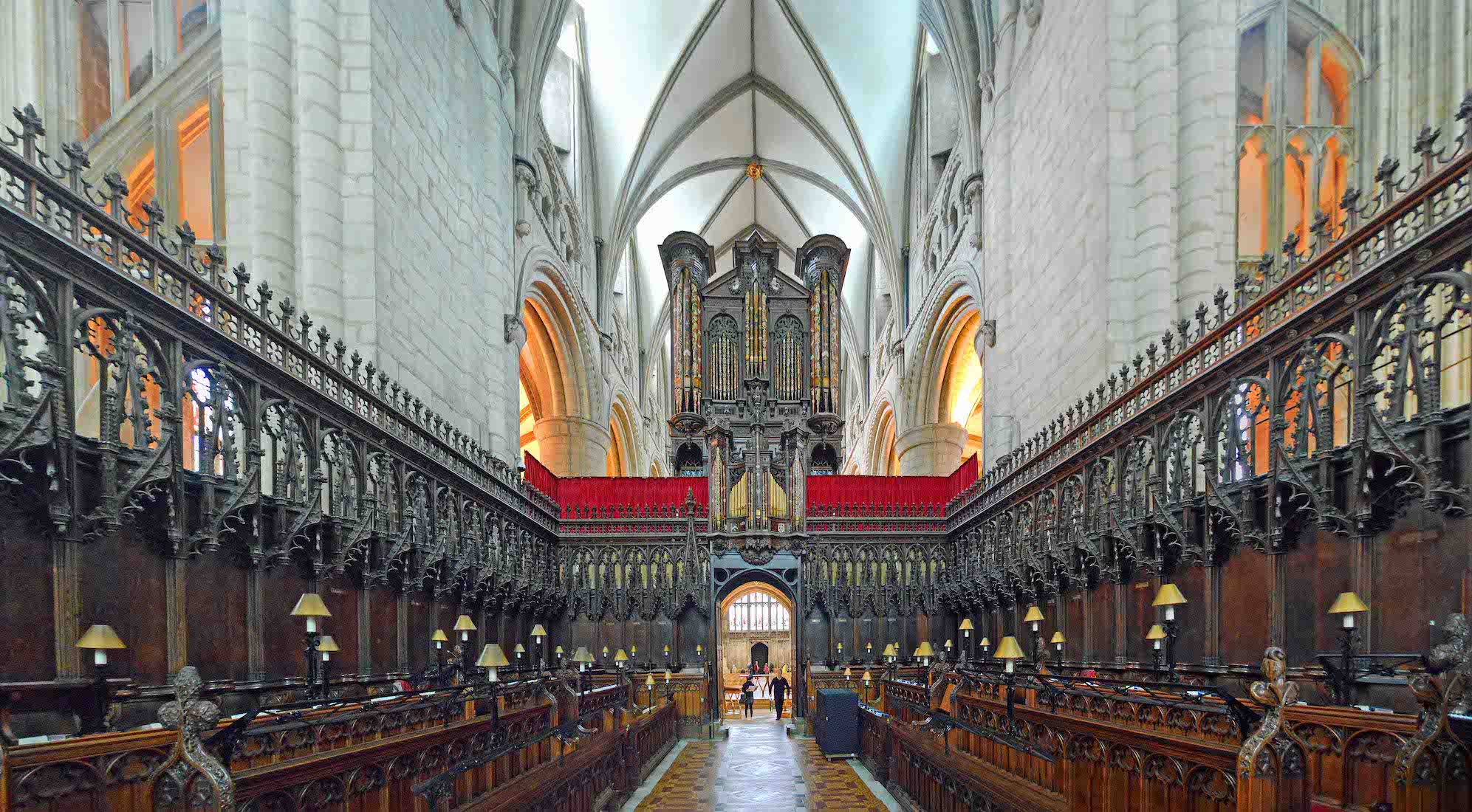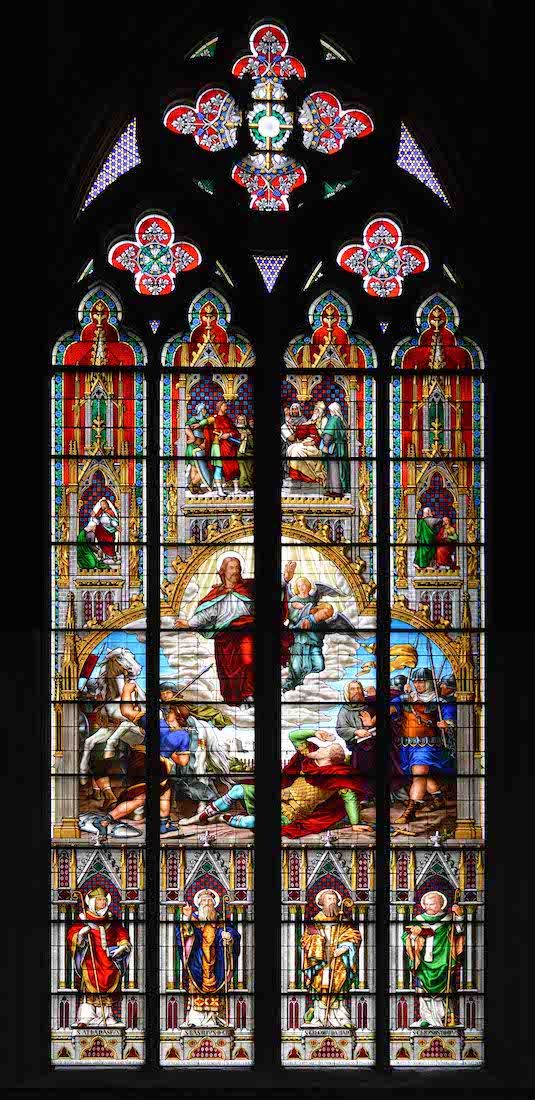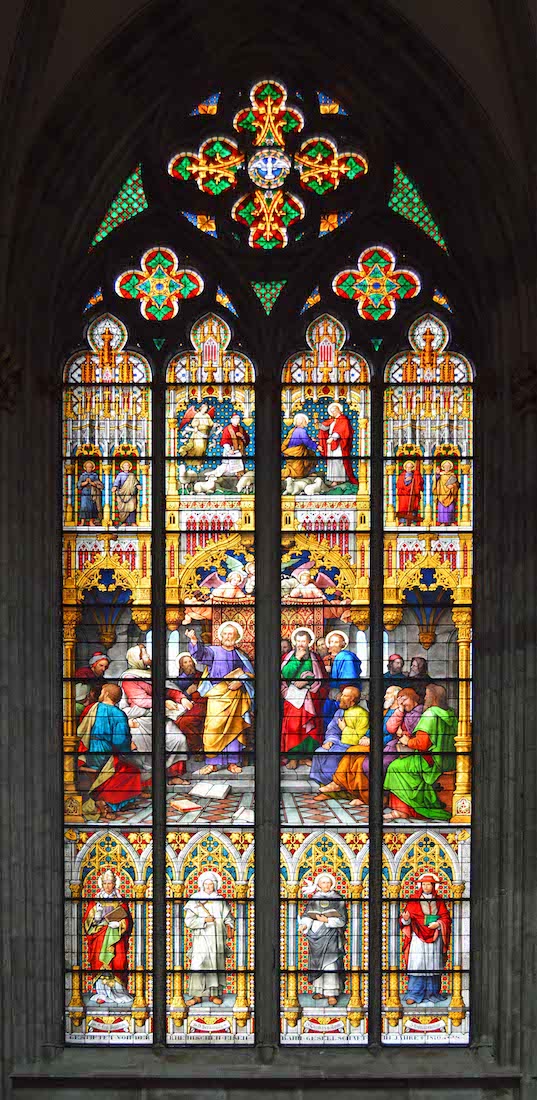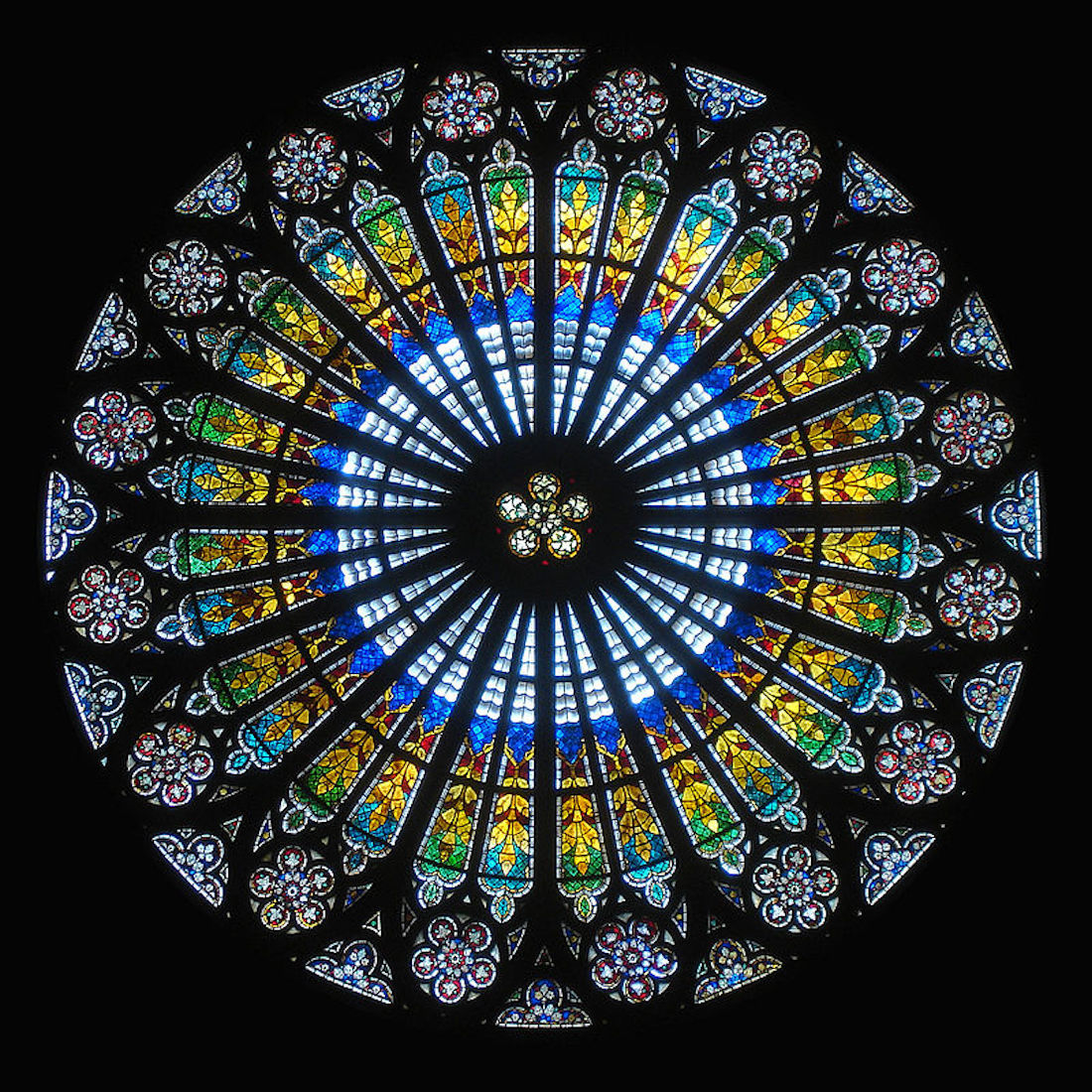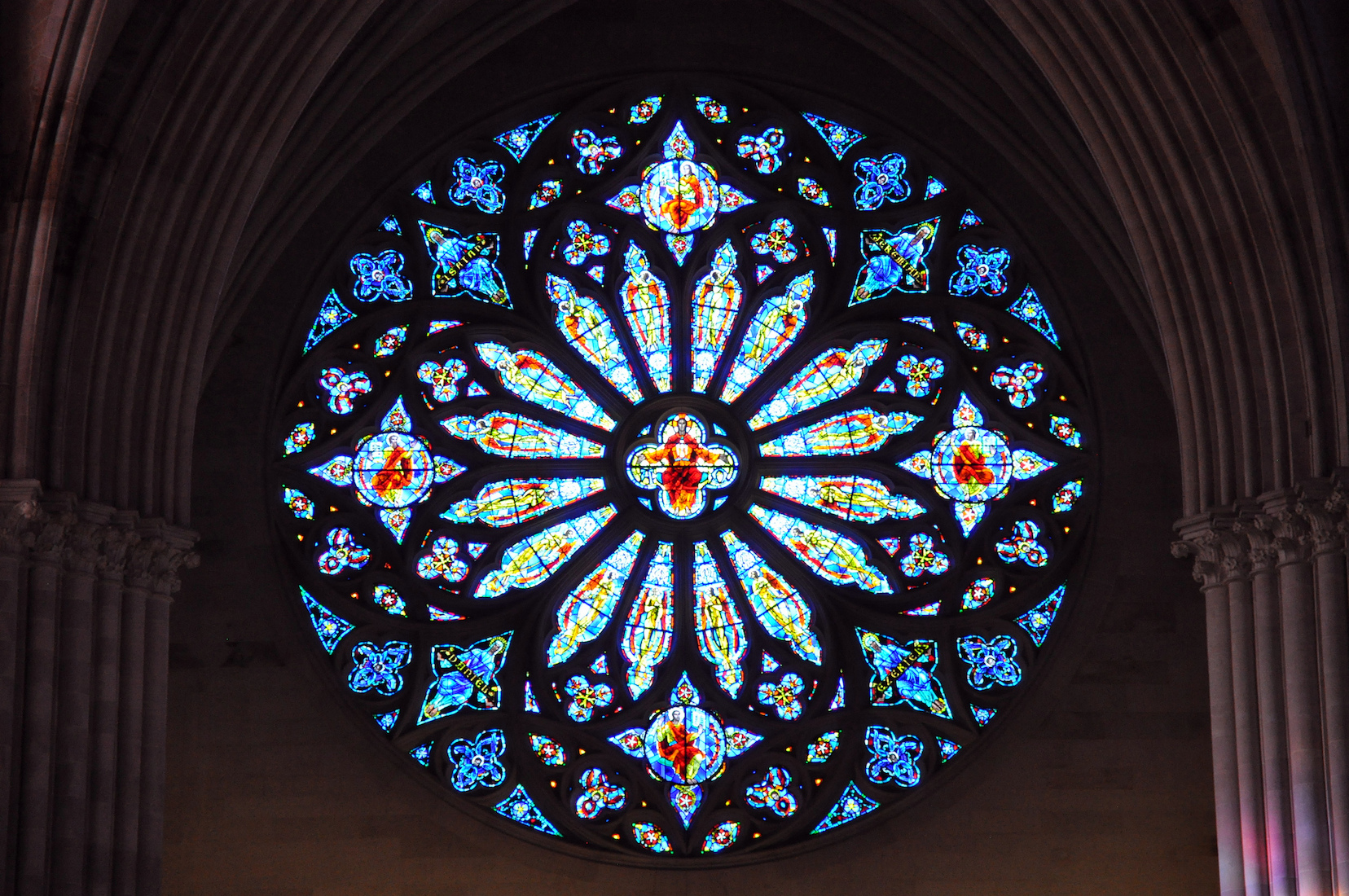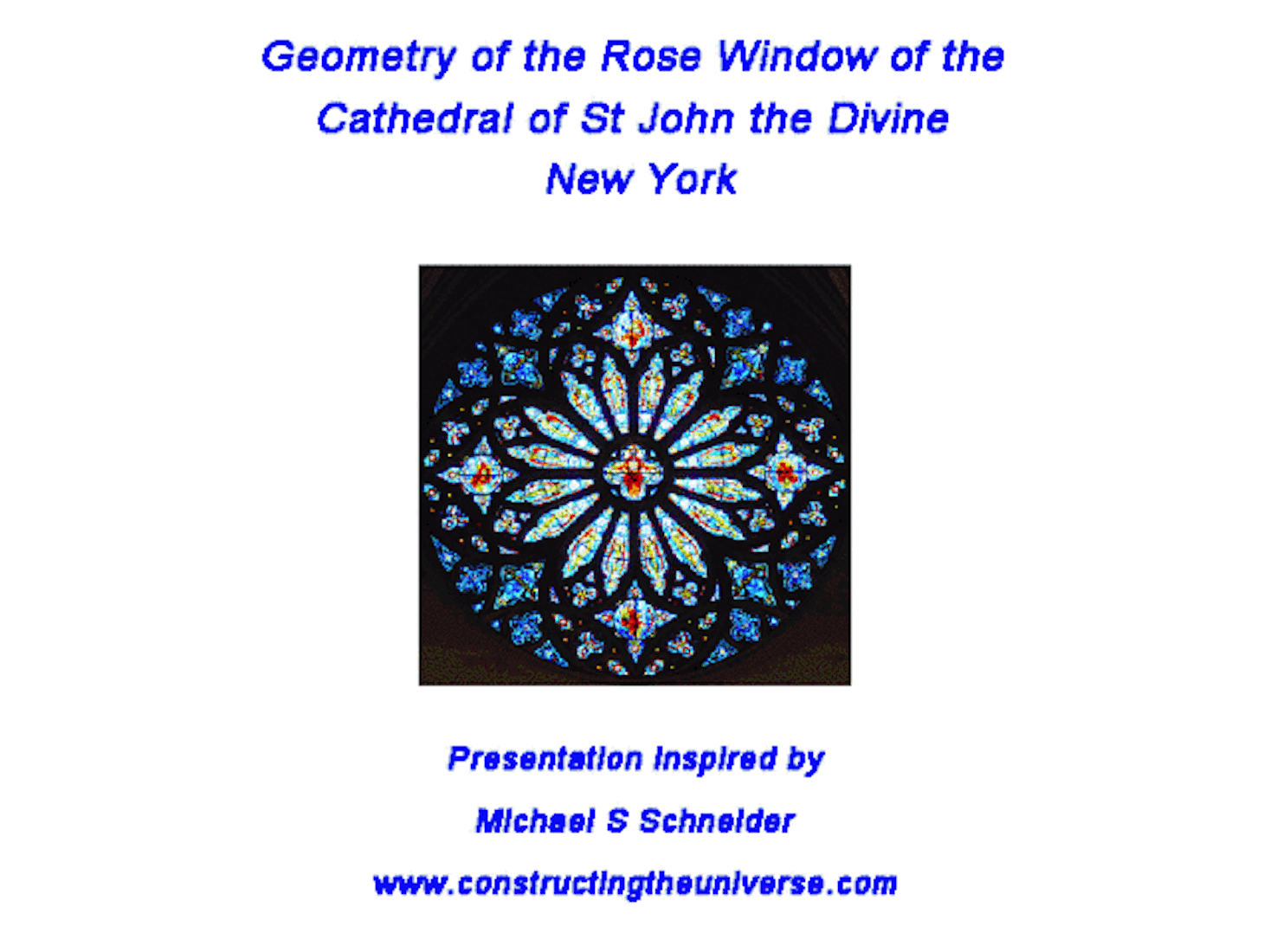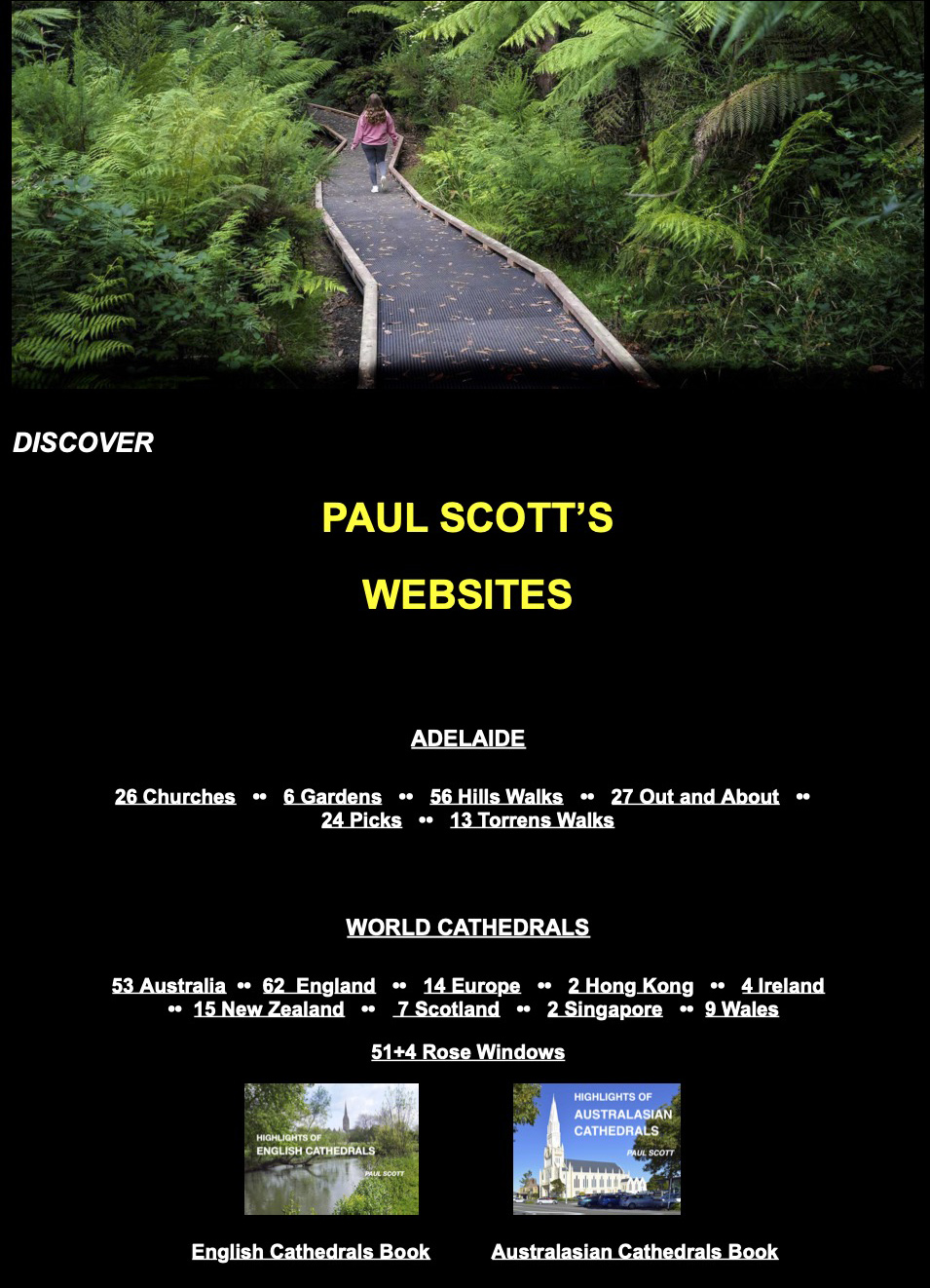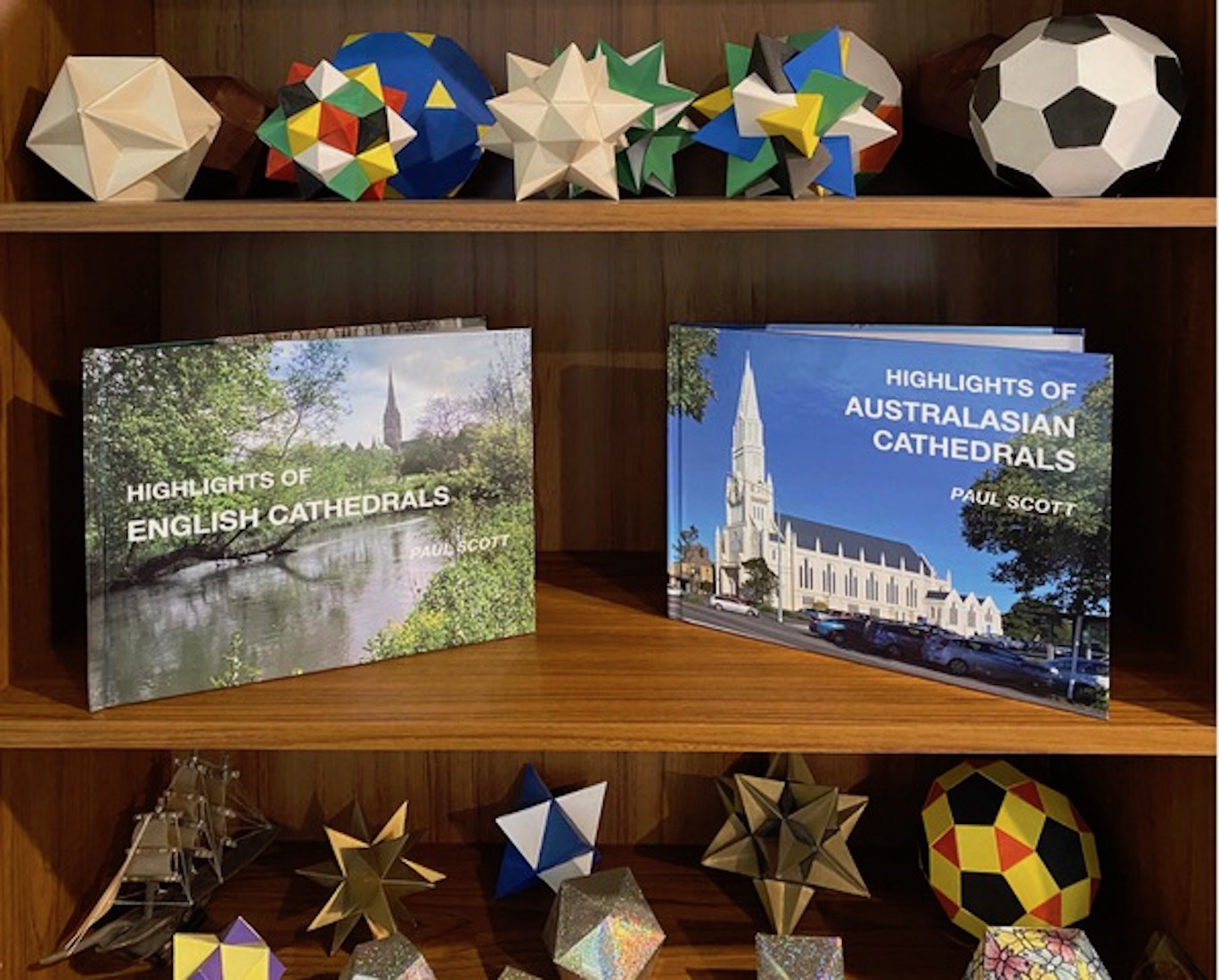42. ST DAVIDS CATHEDRAL MISERICORDS
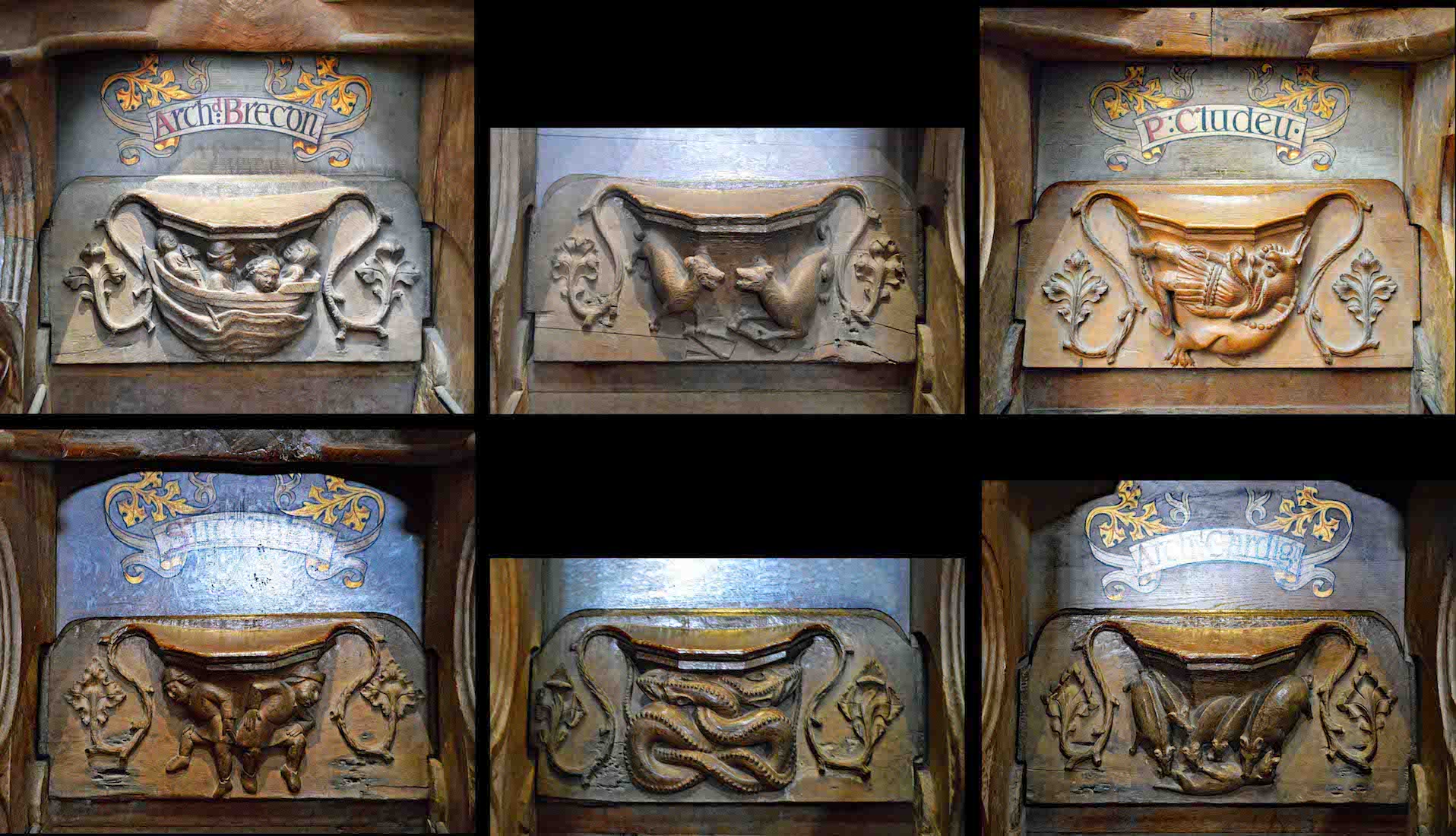
Of interest in the choir stalls is the frequent occurrence of the misericords [mis- ér-i-cords]. When the seat of the stall is lifted up, a shelf appears. This was of great assistance to the monks who had to stand during long services: they could support themselves on these shelves. The rest of the underside of the seats were decorated by carving, and the wood-carvers seem to have had a free hand: the carvings can be spiritual, mundane, fanciful, or plain irreligous! I sometime wonder whether the pronunciation ‘misery-cords’ might have had some appeal to the long-standing monks!
43. THE HIGH ALTAR
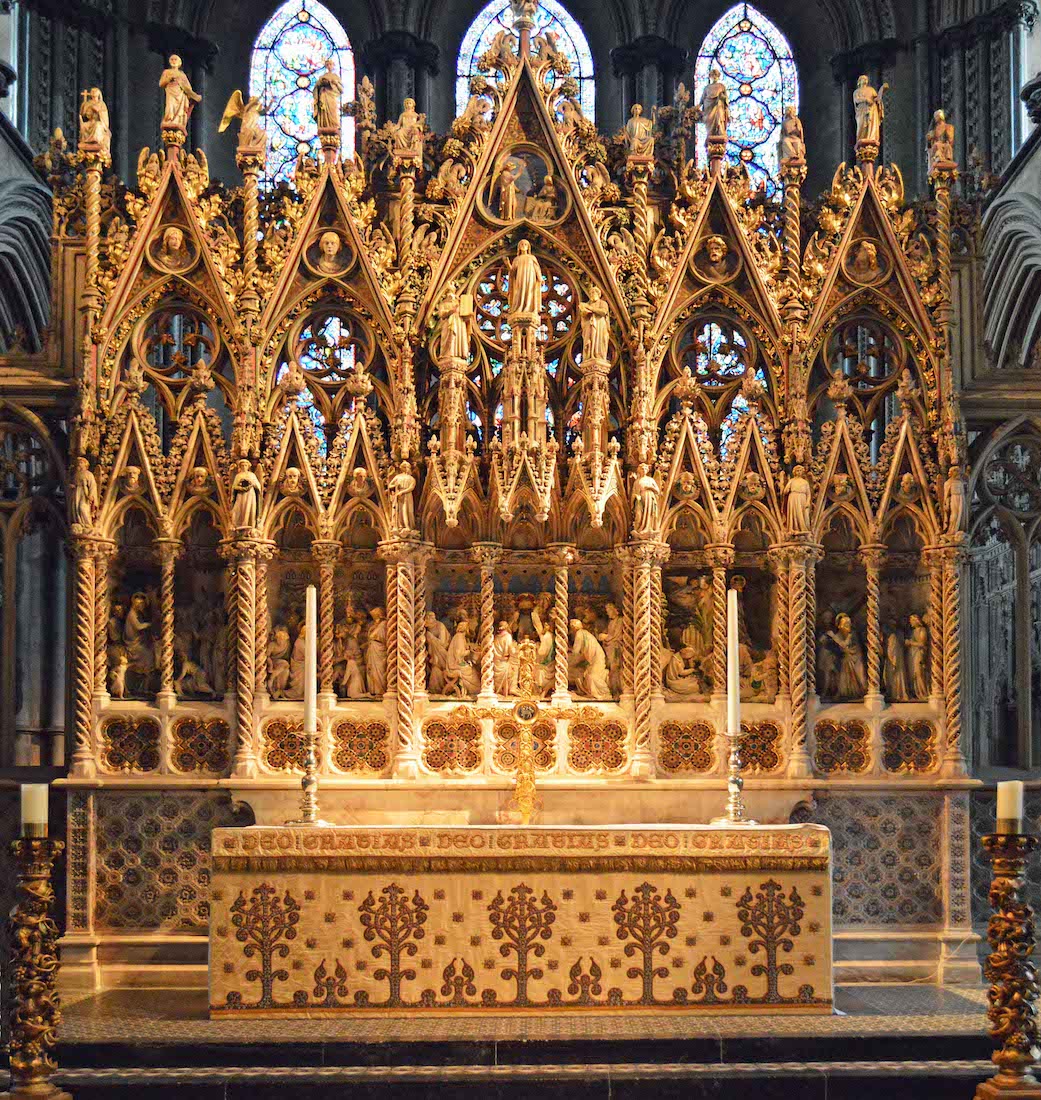
So to the sanctuary with its high altar. The altar itself is often backed with an impressive screen called a reredos. In the early 1960s, a meeting of Vatican II directed that the nave altar should be used for administration of the Eucharist in Catholic cathedrals, rather than the high altar. There was similar thinking in Anglican circles. With large congregations in the nave, this had the advantage of the priest being closer to the people, and facing them. So these days the high altar is generally only used for special occasions.
43. COLOGNE CATHEDRAL WINDOWS
We can’t omit the windows from any examination of cathedrals. The windows were often educational: a means of teaching people with poor reading skills. So they would depict incidents in the Bible, parables, the life of Jesus or various saints. I love these windows in Cologne Cathedral: they are enormous!
44. STRASSBURG CATHEDRAL WHEEL WINDOW
A special sort of stained glass windows are round windows. This window in Strassburg Cathedral is, for obvious reasons, a wheel window..
45. ST JOHN THE DIVINE CATHEDRAL ROSE WINDOW
More often, a round window has a more flower-like appearance and is called a rose window. A rose window has some mathematical interest, in terms of its symmetry and design. I found a presentation by American mathematics teacher Michael Schneider, and tried to improve upon it! We will run it through here without comment, except to say that where there is a straight line, look for symmetry about that line. Where there are equal circles, these show something of the design of the rose pattern.
46A. PRESENTATION
Now you know what retired mathematicians do in their spare time!
47. LINCOLN CATHEDRAL
I will finish this presentation with a funny story. My wife and I were in Lincoln and it was Pentecost Sunday. We decided to attend the morning choral eucharist at the Cathedral. The service was being held in the large choir area, and we were each handed an unlit candle as we went it. I remember the steward warning me not to set the Cathedral on fire! We enjoyed the service, and when it came time to sing the final hymn, our candles were lit, candle by candle along the rows. We filed out with our lit candles during the singing of the hymn, and suddenly the smoke alarms went off! Laughing, we assembled in the nave where the Dean read out his prepared final prayer and said the Grace. To the background noise of the alarm, he prayed: Lord we thank you for your Holy Spirit who set the early church afire ... ! More laughter, and we exited through the main doors with our candles, taking the Light of Jesus out into the world ... and were met by two fire engines and an ambulance! A memorable service.
48. WEBSITE PAGE (TOP PART)
Two final promos ... . This is the top part of my websites index: just type in http://paulscott.info, and browse through a great number of photographic cathedral sites.
49. CATHEDRAL BOOKS
I also have my two books, and would love to sell you a copy! Available from any online bookseller. You can follow the links on my website, or if you do a search under ‘paul scott cathedrals' you will find lots of possibilities! Thank you for coming on my cathedrals journey. I hope you have enjoyed it!


